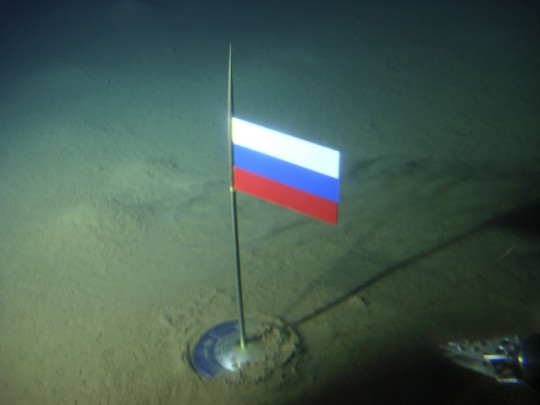Russia has been busy in the Arctic in 2015. Its activities, according to a fascinating round-up by the New York Times' Steven Lee Myers, have included a massive military exercise featuring "45,000 troops, as well as dozens of ships and submarines, including those in its strategic nuclear arsenal, from the Northern Fleet," the permanent deployment of two new brigades of troops to the country's northern reaches, and increased air patrols. By contrast, the U.S. army is considering reducing the number of troops it keeps in Alaska. Earlier in August, Russia resubmitted a claim to a huge undersea expanse of the Arctic to the U.N. Russia fields 41 icebreakers, compared to two fielded by the United States, and is building 10 search-and-rescue stations with accompanying communications infrastructure along its northern coast. There is a lot of oil and gas under that ice, and Russia is playing for keeps.
President Obama is traveling to the United States' Arctic frontier this week in Alaska. Here's what he will be doing:
At a State Department climate conference in Anchorage on Monday, Mr. Obama will call for sweeping collective action on climate change, pushing for commitments designed to propel a global accord in December at a United Nations summit meeting in Paris. Then he plans to hopscotch the state bearing witness to the effects of rising temperatures, hiking Exit Glacier in Seward on Tuesday and meeting Wednesday with salmon fishermen in Dillingham, on pristine Bristol Bay, before journeying to Kotzebue.
Add to this the news that the president will be celebrating the renaming of Mount McKinley to Mount Denali, the traditional native term for the peak.
Aside from filming an episode of reality TV during which he will receive survival training from Bear Grylls—a stunt that admittedly has a Putinish touch to it—Obama's focus during his trip could not possibly present a greater contrast to the aggressiveness and seriousness of purpose shown in the region by the Russians. It is true that the federal government recently gave the go-ahead to Shell to start drilling off of the Alaskan coast, a move that was apparently legally required of the White House but that has nonetheless infuriated environmental activists. But that was one reluctant, limited grant of permission where a comprehensive national strategy is required. Perhaps it's worth specifying: not a national strategy for maybe changing the weather slightly 50 years from now, but for dealing with aggressive, nuclear-armed neighbors today.
So here we go. Get ready for a week of photo ops in front of receding glaciers and talk of the dreadful toll that the melting permafrost will have on the local native communities. (Am I the only one who wonders whether the costs of rising temperatures for these communities, including the serious problem of erosion where people have built homes, will be more than offset by the economic benefits of increased access to natural resources, not to say the increased frequency of temperatures in which the human organism is meant to live? If there is anywhere on this planet where people stand to enjoy a net benefit from global warming, it has got to be the northern reaches of Alaska.) Meanwhile, the commandant of the Coast Guard has all but gone rogue, begging in the pages of the New York Times for the resources to deal with the relative opening of Arctic waters in recent years. I hope he's not looking for support from the commander in chief.
